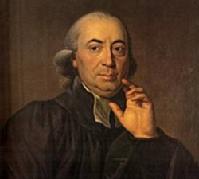Seminar A: What is a Nation?
“The point at issue is how far the modern, mass public culture of the national state is a modern version of the pre-modern elite high culture of the dominant ethnie, or how far it simply uses ‘materials’ from that culture for its own quite different, and novel, purposes.”
(Anthony D. Smith, Nationalism and Modernism, p. 42)
- Are nations really contingent (occur by chance) and products of modernity?
- What makes a nation?
- Why do some ‘low cultures’ succeed in transforming themselves into a high culture and why do some not succeed?
- Why do the elites of some ethnies choose assimilation into an existing ‘high culture’ and why do some elites choose the path of differentiation?
- Why did identification with the nation have a greater impact on behaviour than religious, regional, class or gender identifications?
Essential Reading
Renan, Ernest, ‘What is a Nation?’, in Geoff Eley and Ronald G. Suny (eds), Becoming National. A Reader (New York, Oxford, 1996), pp. 41-55.
Smith, Anthony D., ‘The Origins of Nations’, in Eley/Suny, Becoming National, pp. 105-130.
Smith, Anthony D., ‘Nations and their Pasts’; Gellner, Ernst, ‘Do nations have navels?’, http://www.lse.ac.uk/collections/gellner/Warwick.html [The Warwick Debates].
Smith, Anthony D., Nationalism and Modernism (London, 1998), pp. 27-46 [= Chapter 2: ‘The Culture of Industrialism’], pp. 71-98, [= Chapter 4: ‘Nationalism and Cultural Identity’].
Additional Reading
Hroch, Miroslav, ‘From National Movement to the Fully-Formed Nation: The Nation-Building Process in Europe’, in Eley/Suny, Becoming National, pp. 59-77.
http://www.nationalismproject.org/what.htm [Definitions].
Gellner, Ernest, Nations and Nationalism (Oxford, 1983).

